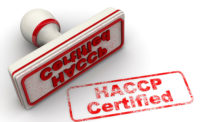By Zia Siddiqi, Ph.D., B.C.E., Director of Quality Systems, Orkin, LLC
With the signing of the Food Safety Modernization Act in 2011, food storage facility managers were asked to shift their mindset from reactive to preventive measures. In terms of pest control, this means that facilities must now focus efforts on preventing pests from accessing facilities and contaminating food products.
The previous standard, in place since the late 1950s, was the Hazard Analysis and Critical Control Points (HACCP) approach. These standards were valuable in that they created procedures for responding to threats in any part of the food supply system. The new standard, called the Hazard Analysis and Risk-Based Preventive Controls (HARPC), takes this one step further.
HARPC mandates that facilities:
- Conduct a thorough hazard analysis.
- Develop, implement and monitor preventive controls.
- Provide a detailed plan in writing, including a schedule and methodology for monitoring the efficiency of the controls.
- Verify the effectiveness of the controls.
- Reanalyze the HARPC plan at least every three years.
So what does this mean for your pest management plan? It means that you need to focus on preventing rather than reacting to pest issues.
Food processing facilities provide everything that pests need to survive: food, water, shelter and warmth. An effective food safety plan requires a pest management program that analyzes the risks of what might encourage pests to enter your facility – such as open doors or windows, product shipments, unfinished repairs and leaky roofs – and then proposes steps to help eliminate those areas of risk. Careful and comprehensive documentation is key throughout this process as policies are implemented.
The best way to help eliminate pest risks is by working with an experienced pest management professional to create and implement an Integrated Pest Management (IPM) program. IPM places a focus on techniques such as facility maintenance and sanitation to help prevent pests from entering your facility, and only uses chemical treatment options as a last resort.
An IPM plan includes regular monitoring and analysis of pest activity. Documentation of these activities is crucial, as the FDA or a third-party auditor will be looking to see detailed reports on all aspects of an IPM plan, including past issues and the actions taken to resolve them. Important factors to consider when creating a plan include seasonal cycles, geographic location, maintenance and sanitation policies, and number of staff.
Here are some IPM tactics to help get you started:
- Walk around the outside of your facility and seal any openings and cracks, potential entry points for pests, with caulk or another waterproof sealant.
- Trim vegetation at least three feet away from the facility to keep pests from using it to access your facility.
- Keep doors and windows closed. Make sure that there aren’t any holes in screens.
- Clean and sanitize garbage bins and take out the trash regularly.
Even with a thorough IPM program, pests may still find a way into your facility. As soon as a pest sighting occurs, it’s important to react quickly to resolve the problem. Many pests are able to reproduce rapidly, so letting them exist within your facility might lead to an infestation within a matter of weeks.
In the case of a pest sighting, contact your pest management professional and document everything. It’s important to record the type of pest, the location within the facility where it was found and the number of pests seen. Record the actions taken to resolve the issue and help keep it from reoccurring in the future. Update your documents if you determine a change to your IPM plan is necessary.
In practice, you won’t need an entirely new pest management program under the new HARPC regulations. But you do need to shift your program’s focus more towards preventing pests than reacting to them.
Dr. Zia Siddiqi is Director of Quality Systems for Orkin. A board certified entomologist with more than 35 years in the industry, Dr. Siddiqi is an acknowledged leader in the field of pest management. For more information, e-mail zsiddiqi@orkin.com or visit www.orkincommercial.com.



Report Abusive Comment